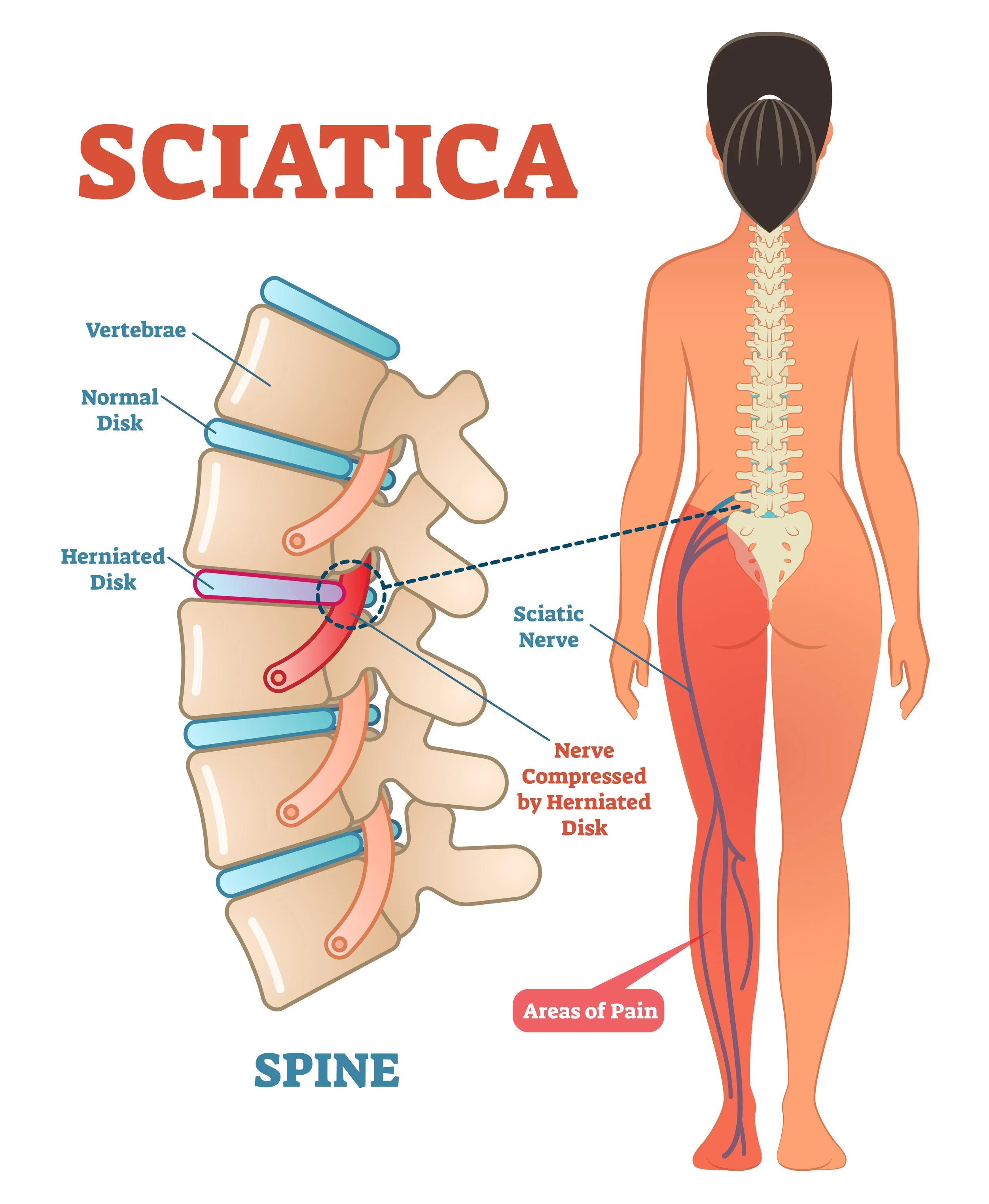Sciatica Rehabilitation: How Physiotherapy Can Guide Your Journey to Recovery
Sciatica, characterised by pain that radiates along the sciatic nerve, can be a debilitating condition that significantly impacts daily life. Whether caused by a herniated disc, spinal stenosis, or other underlying issues, sciatica requires a comprehensive rehabilitation approach to alleviate symptoms, improve mobility, and prevent recurrence. While sciatica can be challenging to manage, physiotherapy offers a comprehensive approach to rehabilitation that addresses pain relief, improves mobility, and enhances overall function.
Understanding Sciatica:
Sciatica occurs when the sciatic nerve, which runs from the lower back down the back of each leg, becomes compressed or irritated. This compression can result in pain, numbness, tingling, or weakness that radiates along the path of the nerve.
Rehabilitation Strategies:
Rehabilitation for sciatica typically involves a combination of pain management techniques, targeted exercises, and lifestyle modifications. Here are some effective strategies to help you recover from sciatica:
Pain Management:
Consult with a healthcare professional to develop a personalised pain management plan. This may include over-the-counter or prescription medications to alleviate pain and inflammation.
Physiotherapists employ various pain management techniques to alleviate discomfort and promote healing. These may include manual therapy, such as soft tissue releases, dry needling and joint mobilisations, to reduce muscle tension and improve joint mobility.
Targeted Exercise Prescription:
One of the cornerstones of sciatica rehabilitation is therapeutic exercise tailored to your specific needs and capabilities. Your physiotherapist will design a customised exercise program focused on improving flexibility, strength, and mobility while addressing underlying biomechanical issues.
Exercises may include stretching to alleviate nerve compression, strengthening exercises to stabilise the spine and supporting muscles, and core stabilisation exercises to improve posture and spinal alignment.
Gentle Stretching Exercises:
Incorporate gentle stretching exercises to improve flexibility and alleviate pressure on the sciatic nerve. Focus on stretches that target the lower back, glutes, hips, and hamstrings.
Examples of effective stretches include the seated piriformis stretch, supine hamstring stretch, and reclining pigeon pose.
Core Strengthening:
Strengthening the muscles of the core can help support the spine and alleviate pressure on the sciatic nerve. Focus on exercises that target the abdominal muscles, obliques, and lower back.
Planks, bird dogs, and bridges are excellent exercises to strengthen the core and stabilise the spine.
Posture Correction:
Poor posture can exacerbate sciatica symptoms by placing additional strain on the spine. Focus on maintaining proper posture while sitting, standing, and walking.
Use ergonomic chairs and supportive cushions to help maintain a neutral spine while sitting for prolonged periods.
Recovering from sciatica requires patience, dedication, and a multifaceted approach to rehabilitation. By incorporating pain management techniques, targeted exercises, and lifestyle modifications into your daily routine, you can alleviate symptoms, improve mobility, and prevent recurrence of sciatica. With time and consistent effort, you can overcome sciatica and regain control of your life.

